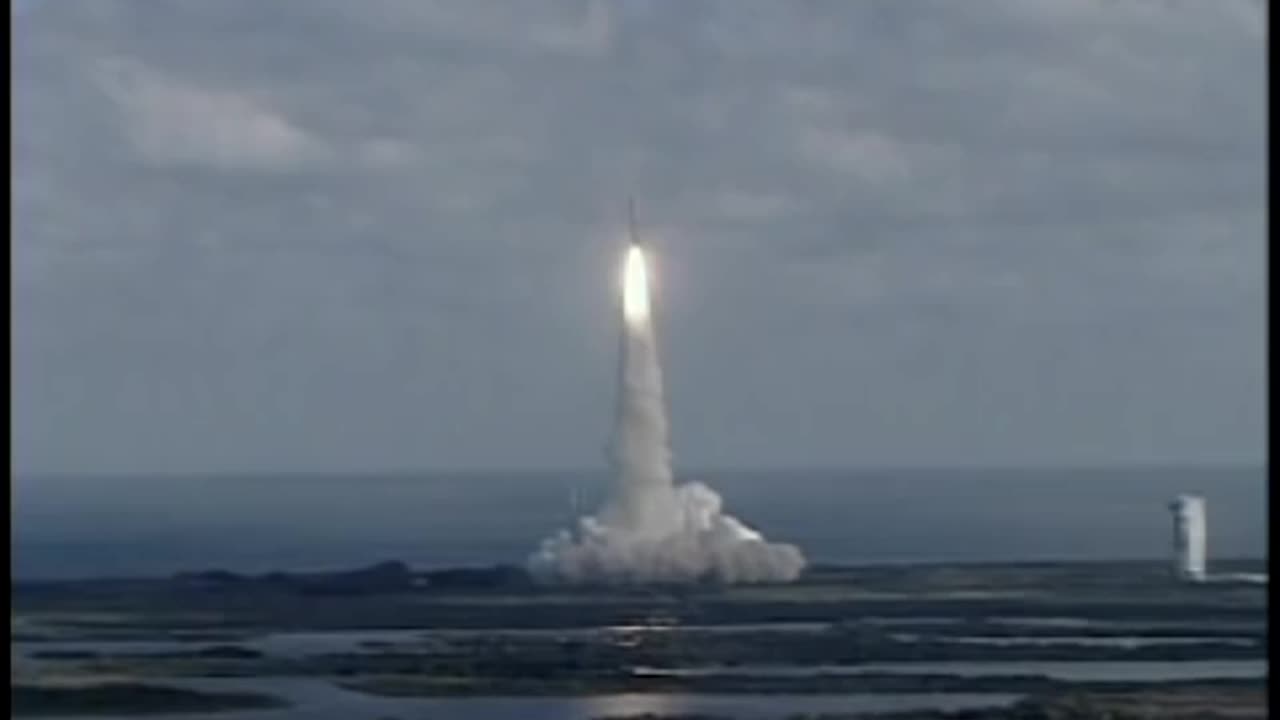Premium Only Content

NASA Mission Update: New Horizon
Three billion miles away from Earth, near the farthest reaches of our solar system, is the heavenly body with an extreme orbit known for 76 years as Pluto. Discovered by astronomers in 1930, Pluto was considered the ninth planet in our solar system until 2006 -- when, after much debate, it was reclassified by the International Astronomical Union as a "dwarf planet," officially dropping its name -- for a number.
Denis Bogan, New Horizons Program Scientist: "Well, it certainly doesnt affect Pluto. Pluto is the same thing it was before it was discovered, before it was given a name, and before the name was changed."
Nor does Pluto's reclassification change the importance of NASA's first mission to study it.
Launch Announcer: "We have ignition and lift off of NASAs New Horizon spacecraft on a decade-long"
Launched in January 2006, the thousand-pound New Horizons spacecraft will travel through space for 9-1/2 years before meeting up with Pluto in the summer of 2015.
Denis Bogan: "The last time Pluto was in this position in its orbit was during the French and Indian War. It takes 248 Earth years to travel around its orbit and come back to the same place again. At the speed of light, sending a radio signal back from the spacecraft, from Pluto to Earth, will take 4-1/2 hours."
Operating on less power than a pair of common 100-watt light bulbs, New Horizons will map the highest-interest areas of Pluto to a resolution of 50 meters, less than the length of a football field -- three billion miles away. Itll then move on to survey Pluto's neighborhood: the atmosphere, ancient materials and small bodies of the Kuiper Belt, a chaotic region astrophysicists believe can tell us how Earth, the planets, even our sun were made.
Denis Bogan: "We have primitive material chunks of rock and ice, millions of objects of objects out there in the Kuiper Belt and we know very little about it. We didnt discover it until 1992."
Traveling 3 billion miles to frozen, rocky Pluto and its environs, New Horizon is, in a way, going back in time to the chemical building blocks of the solar system, and life.
To learn more about the New Horizons mission visit www.nasa.gov
-
 LIVE
LIVE
Misha Petrov
22 minutes agoLeftist LUNATICS Can’t ACCEPT Trump’s Win! Uncovering Their Darkest WARNINGS to Trump Voters
281 watching -
 LIVE
LIVE
GameLeap RAID Shadow Legends
20 minutes agoWE SOLVED SAND DEVIL! Top Tips Every New Player Needs - Raid Shadow Legends
25 watching -
 LIVE
LIVE
Grant Stinchfield
1 hour agoBallot Dumps, More Voters than Registered, Even Deleted Votes,,, It Looks Very Fishy!
895 watching -
 1:02:21
1:02:21
The Dan Bongino Show
4 hours agoTrump Makes His BOLDEST Moves Yet (Ep. 2370) - 11/13/2024
543K1.88K -
 1:02:59
1:02:59
The Rubin Report
2 hours agoCNN Host Forced to Intervene as Guest Loses His Cool as Republican Calmly States Facts
40.4K42 -

The Boomer Effect
18 hours agoSocial Security - Simple and Smart
14 -
 24:06
24:06
Rethinking the Dollar
3 hours agoDigital Illusions of Wealth: Why Real Silver Matters More Than Ever!
3081 -
 1:37:01
1:37:01
Professor Nez
16 hours ago🚨LIVE President-elect Trump Meets with President Biden in the Oval Office
19.3K23 -
 2:00:38
2:00:38
Steven Crowder
4 hours agoLet that Sink In: This is why the Left Lost & Elon and Vivek Form New Trump Superteam
337K202 -
 DVR
DVR
Benny Johnson
3 hours ago🚨 DADDY'S HOME: Trump Meets Biden At White House LIVE Right NOW, Joe Surrenders Federal Gov to MAGA
65.9K147